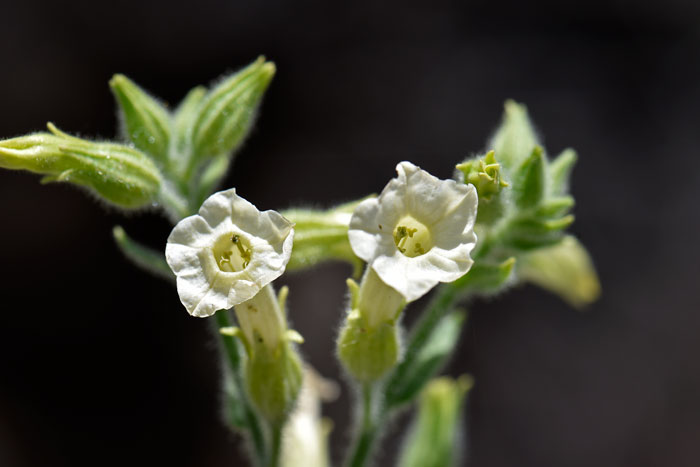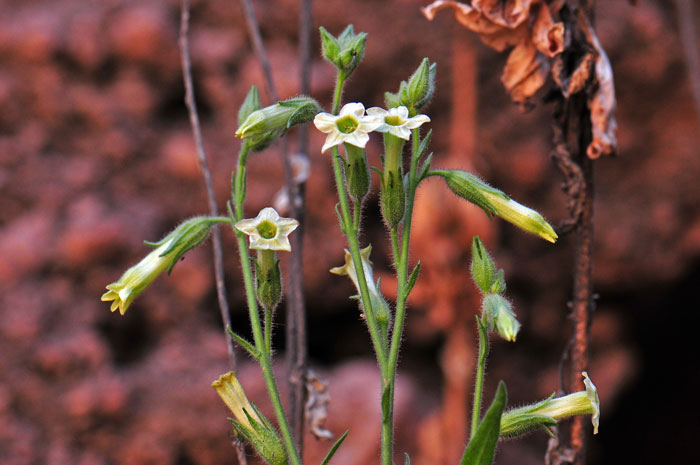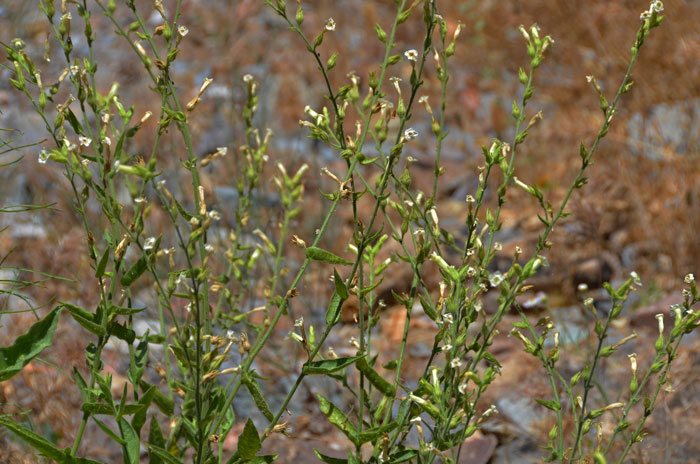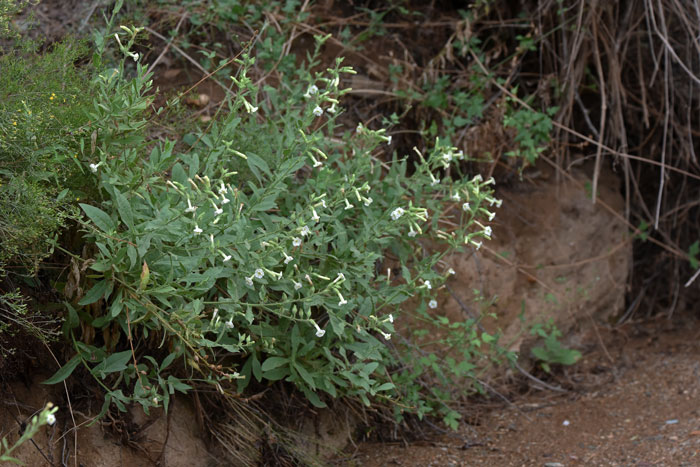Nicotiana obtusifolia, Desert Tobacco




Scientific Name: Nicotiana obtusifolia
Common Name: Desert Tobacco
Also Called: Coyote Tobacco, Tobacco Plant (Spanish: Tabaco de Coyote, Tabaquillo de Coyote, Pata de Coyote, Tabaco Papanta)
Family: Solanaceae, Nightshade or Potato Family
Synonyms: (Nicotiana trigonophylla)
Status: Native
Duration: Annual, biennial, perennial.
Size: Up to 2½ feet more or less.
Growth Form: Forb/herb, subshrub; plants shrubby, woody base; both leaves and stems are sticky from the presence of glandular hairs.
Leaves: Green; lower leaves with short broad petioles, upper leaves narrowly ovate, sessile or clasping.
Flower Color: White or whitish-cream; inflorescence linear to lanceolate bracts; flowers diurnal in a loosely branched cluster at the top; corolla tube hairy on the inside; corolla trumpet-shaped.
Flowering Season: March to June and throughout the year with adequate rainfall.
Elevation: Up to 6,000 feet, usually lower; below 5,000 feet in California.
Habitat Preferences: Common along sandy washes, gravelly or rocky washes, slopes.
Recorded Range: Nicotiana obtusifolia is found mostly in the southwestern United States in AZ, CA, MD, NM, NV, OK, TX, UT. It is also native throughout Baja California and most of Mexico. In Arizona it is found state-wide in preferred habitats.
North America & US County Distribution Map for Nicotiana obtusifolia.
U.S. Weed Information: No information available.
Invasive/Noxious Weed Information: No information available.
Wetland Indicator: In North America Nicotiana obtusifolia has the following wetland designations: Arid West, FACU; Atlantic and Gulf Coastal Plain, FACU; Eastern Mountains and Piedmont, FACU, Great Plains, FACU; Western Mountains, Valleys, and Coast, FACU.
FACU = Facultative Upland, usually occur in non-wetlands, but may occur in wetlands.
Threatened/Endangered Information: No information available.
In the Southwestern United States, Arizona and Nevada each have 5 species of Nicotiana, in California there are 9 species, New Mexico has 4 species, Texas has 7 species and Utah has 2 species. All data is approximate and subject to taxonomic changes.
There are 2 varieties in Nicotiana obtusifolia:
Nicotiana obtusifolia var. obtusifolia, Desert Tobacco (AZ, NV, UT);
Nicotiana obtusifolia var. palmeri, Desert Tobacco (AZ, CA, MD, NM, NV, OK, TX, UT).
Comments: In Southwest Desert Flora also see Tree Tobacco, Nicotiana glauca.

